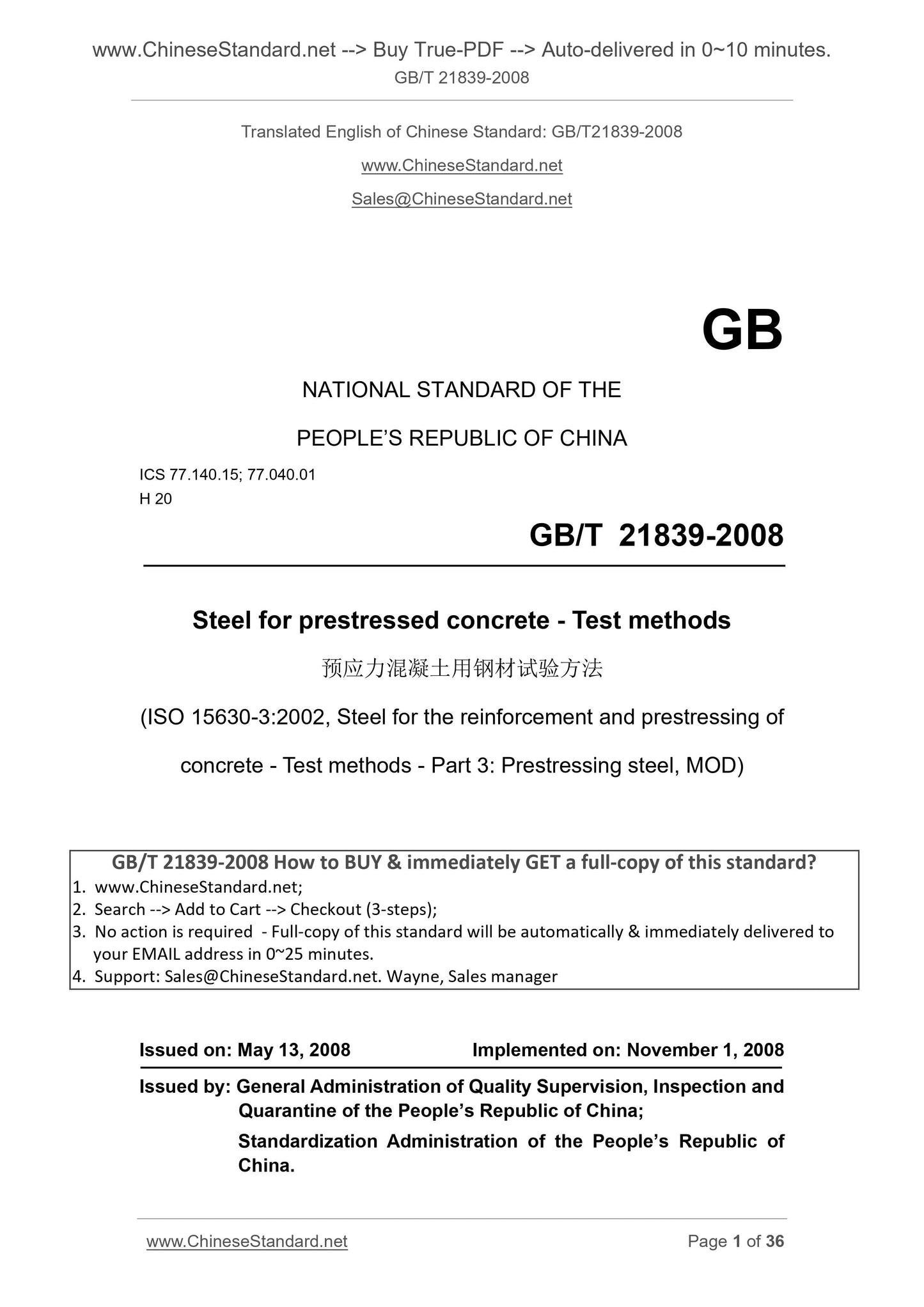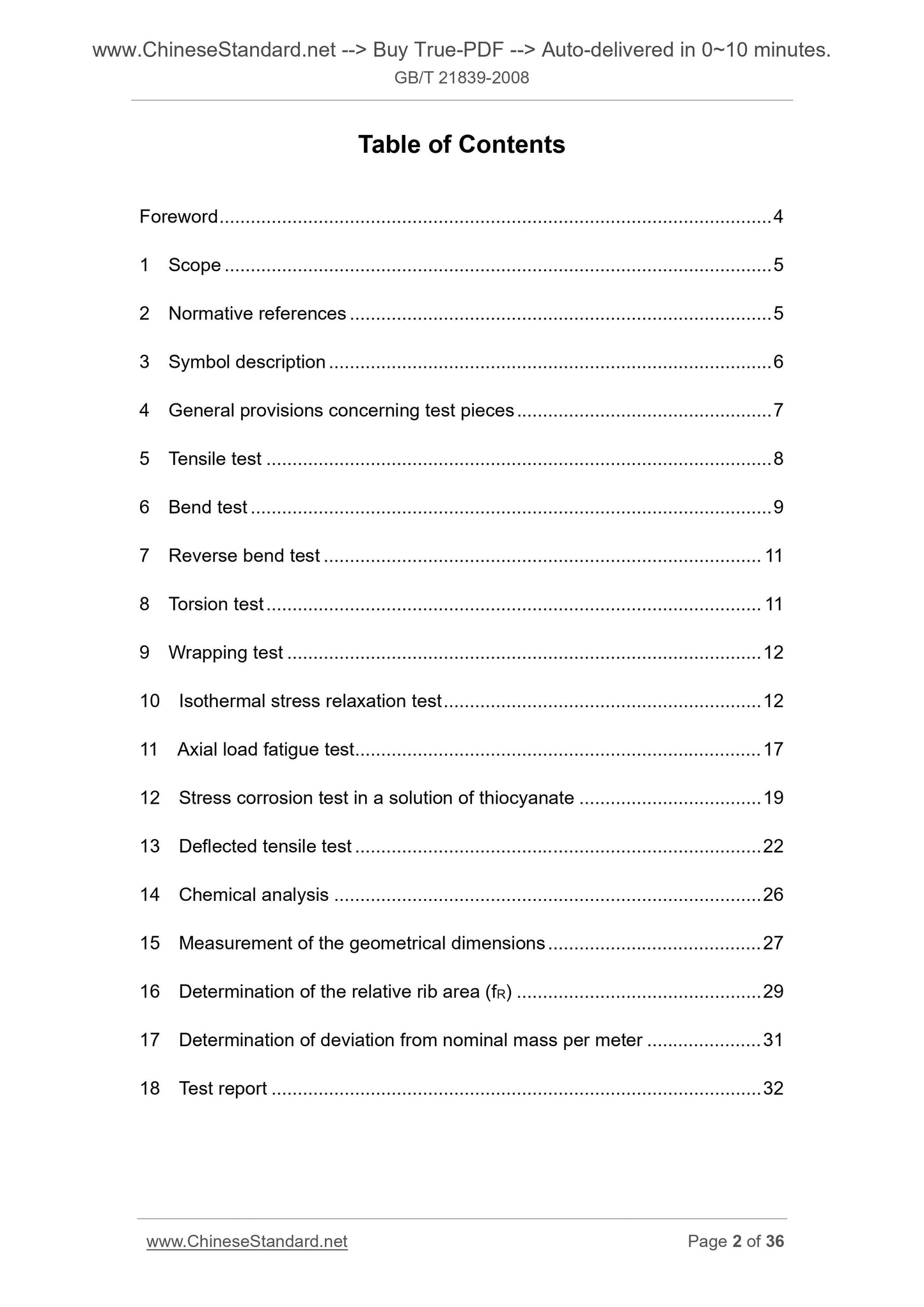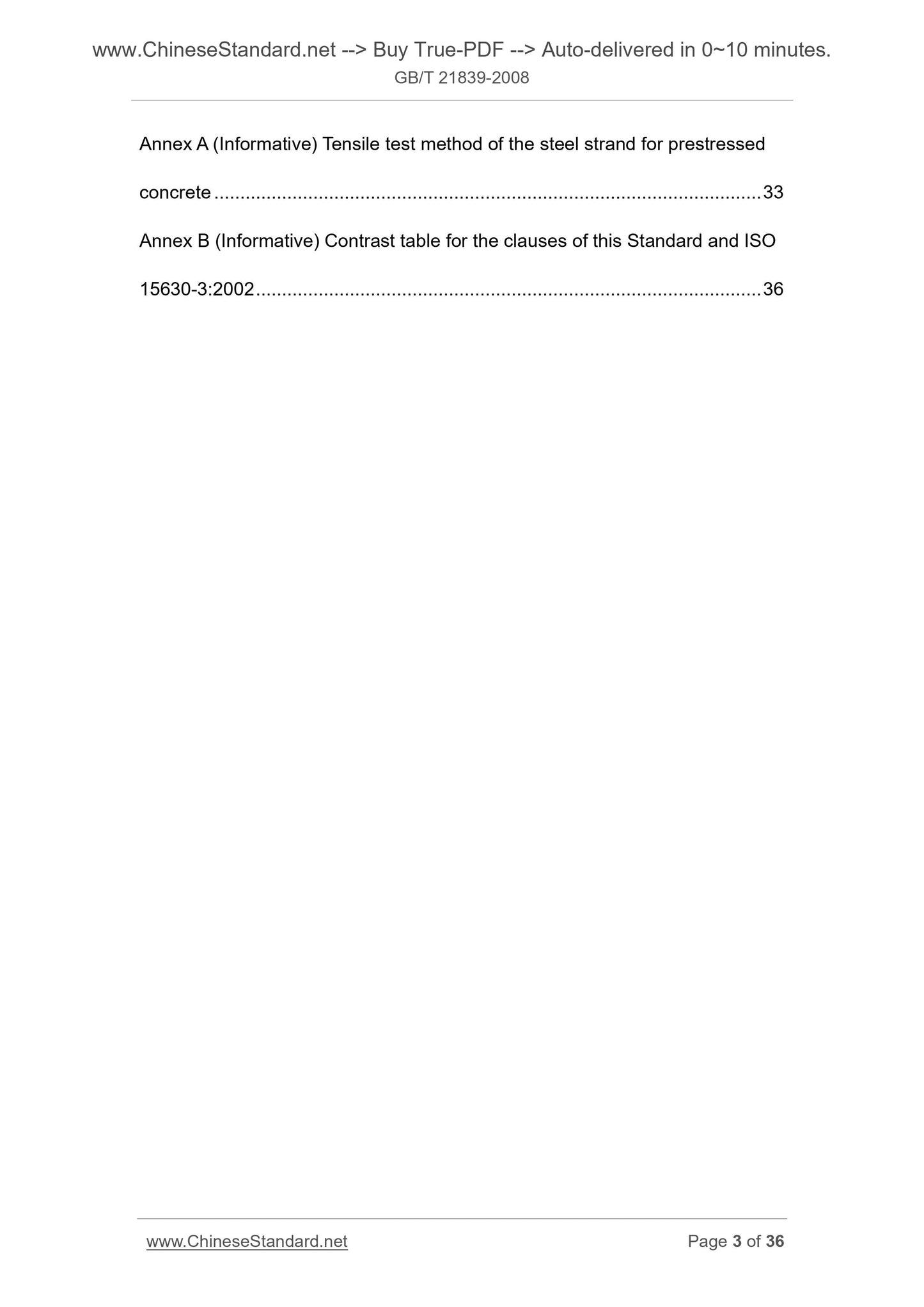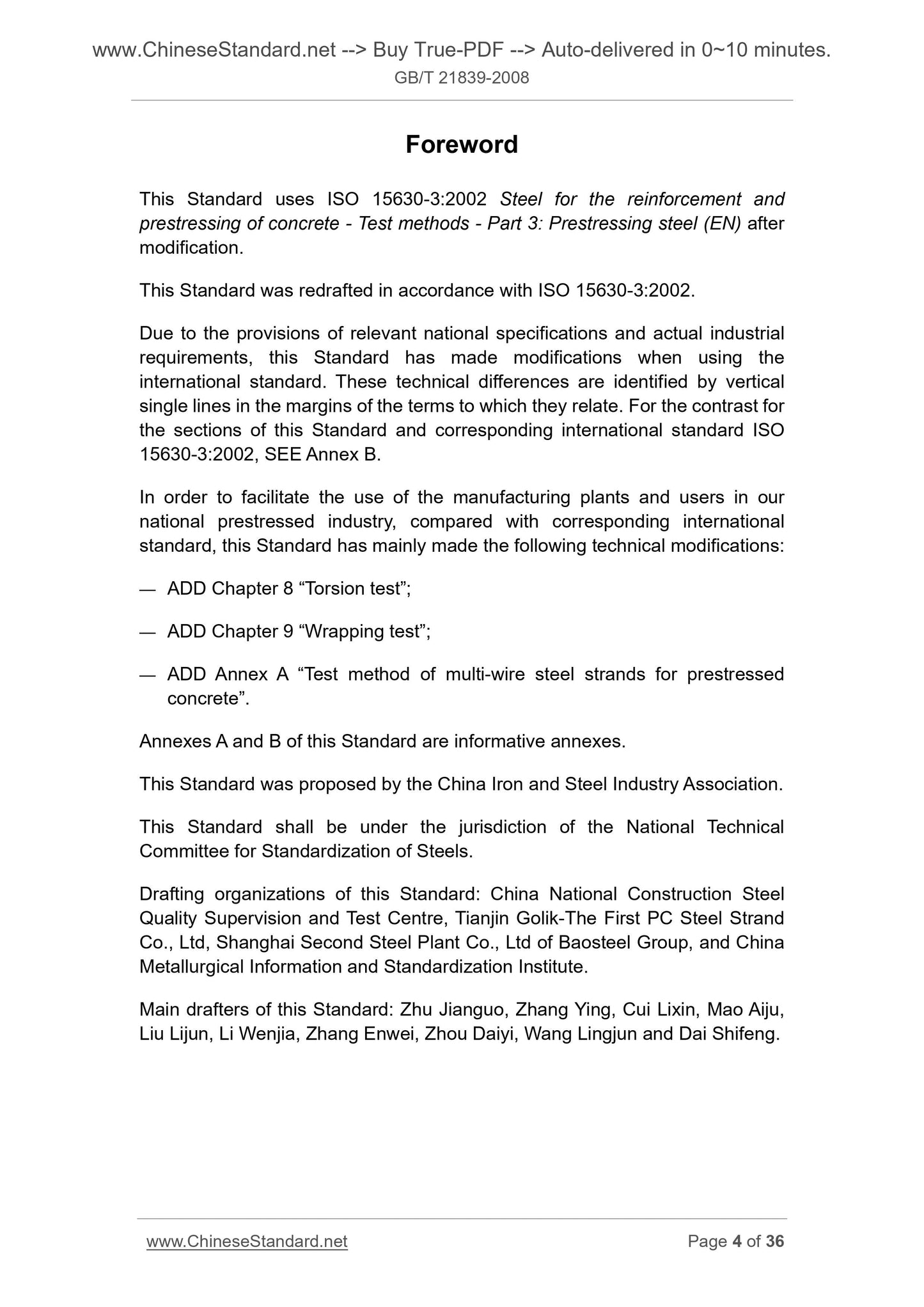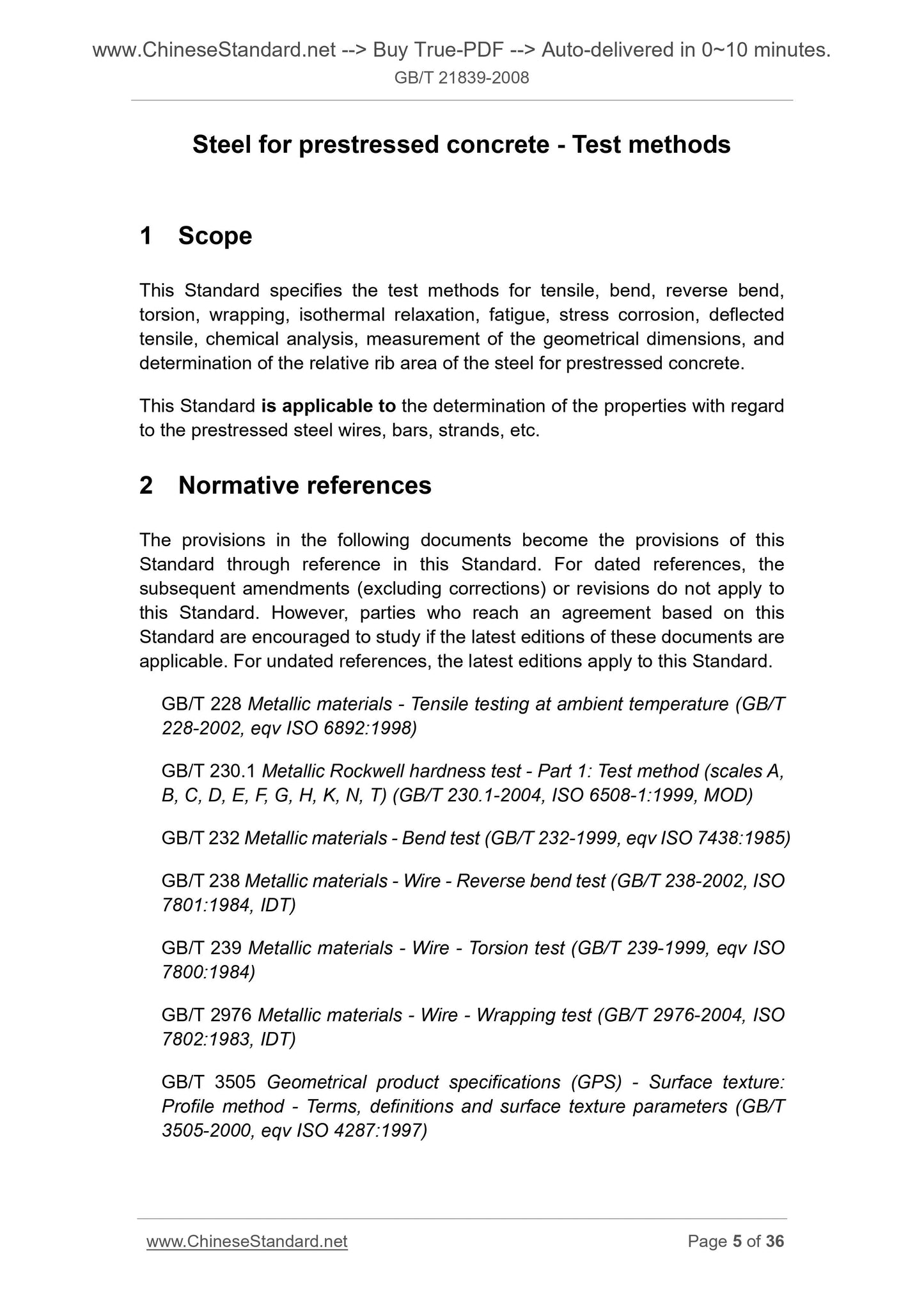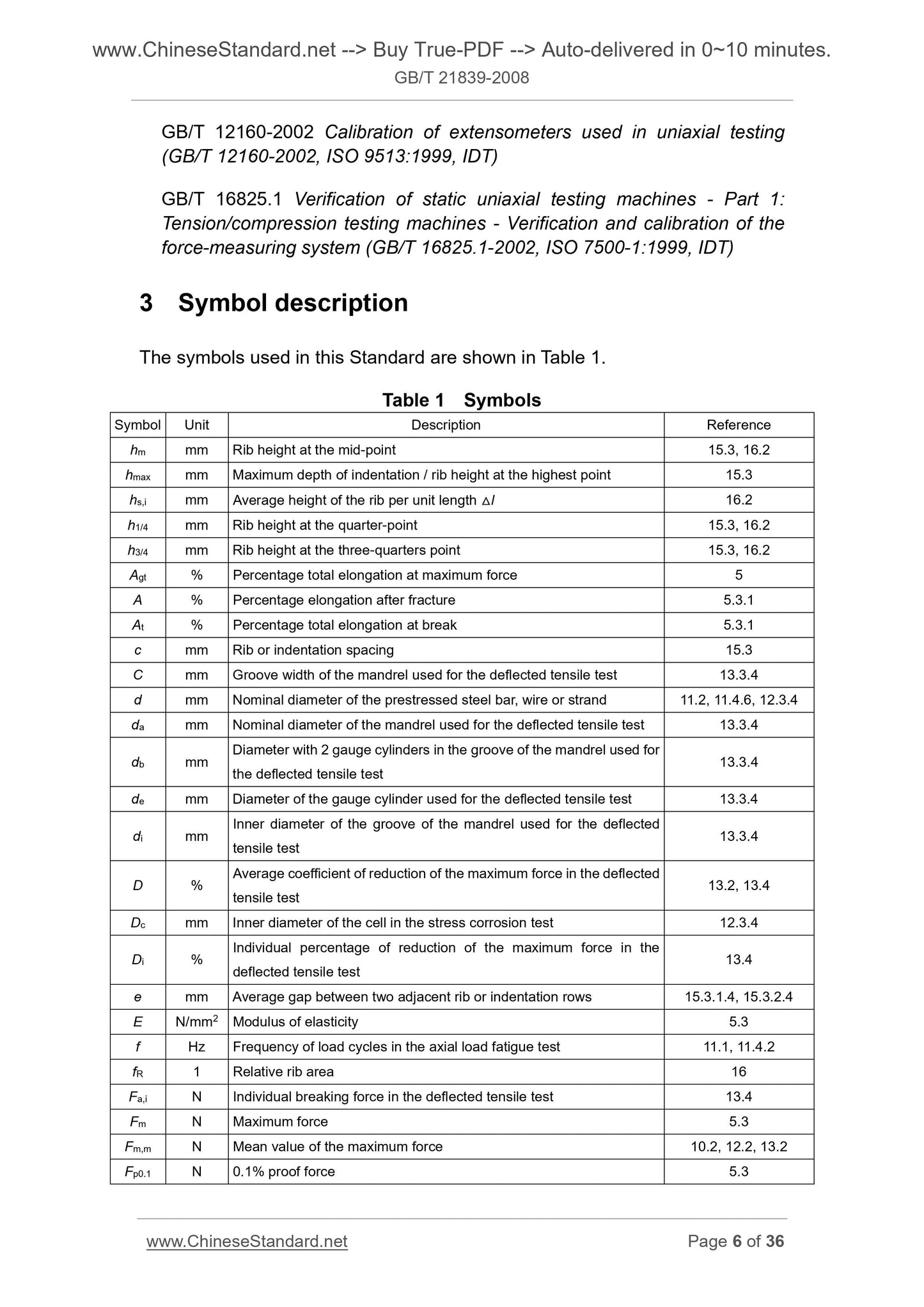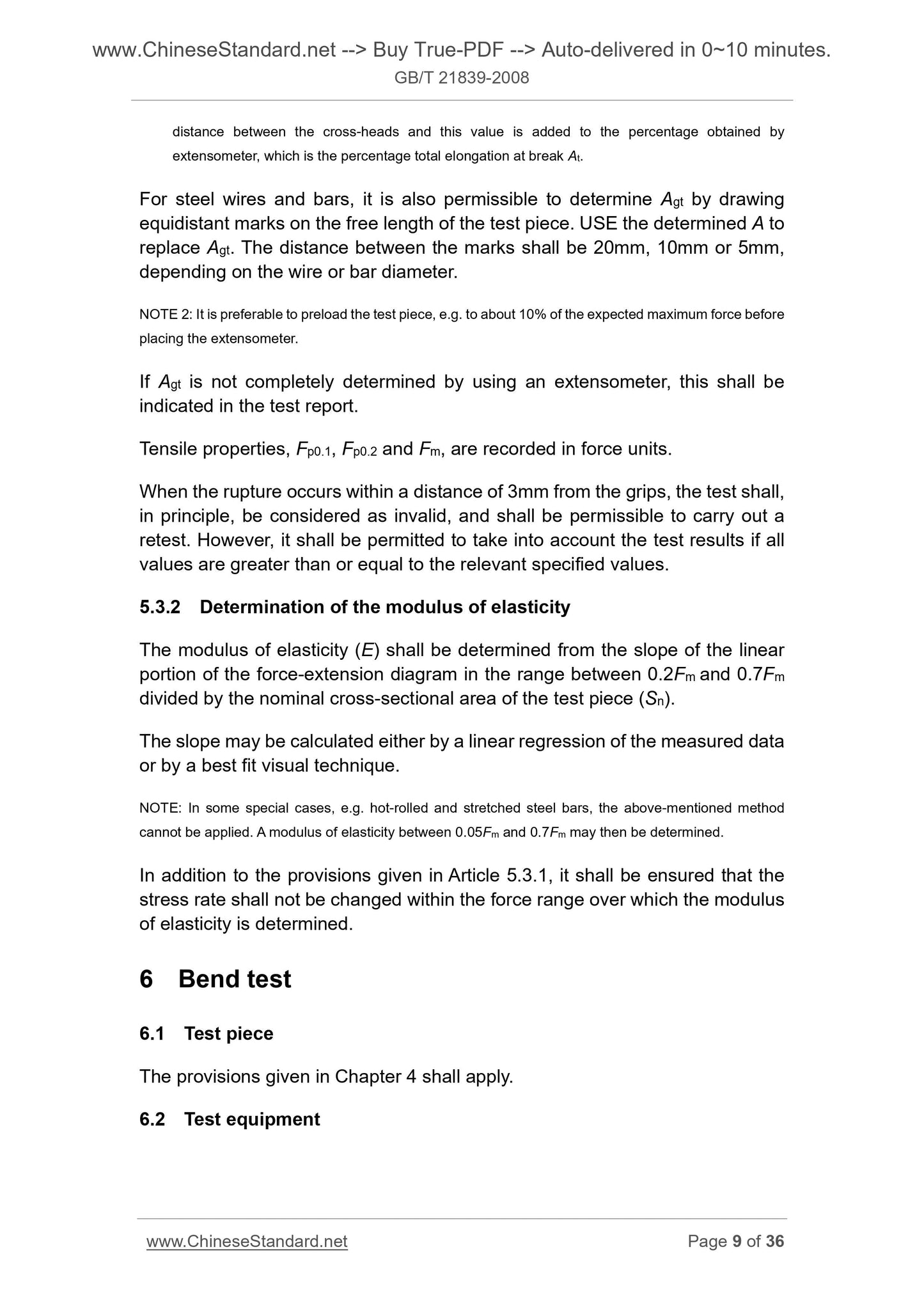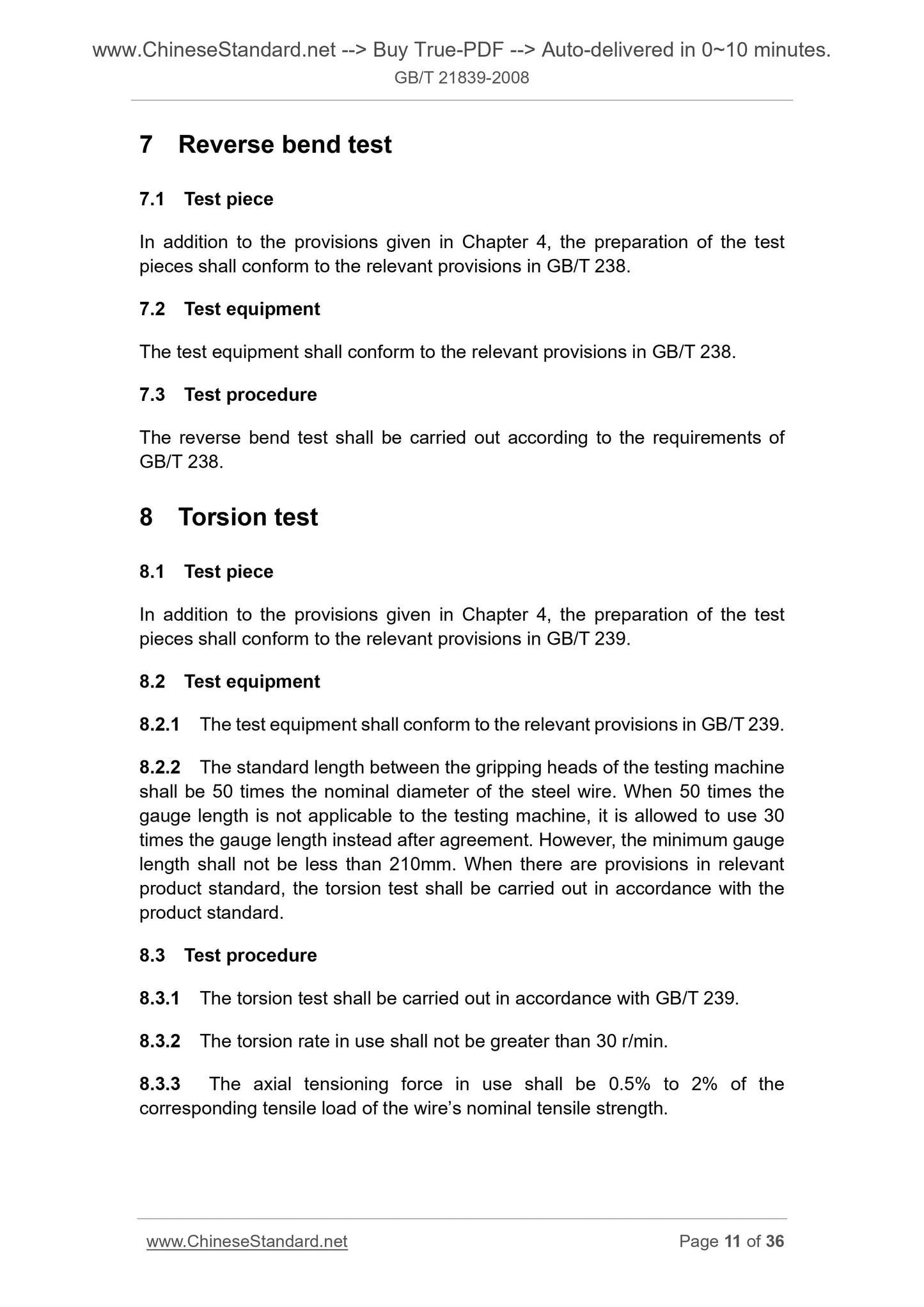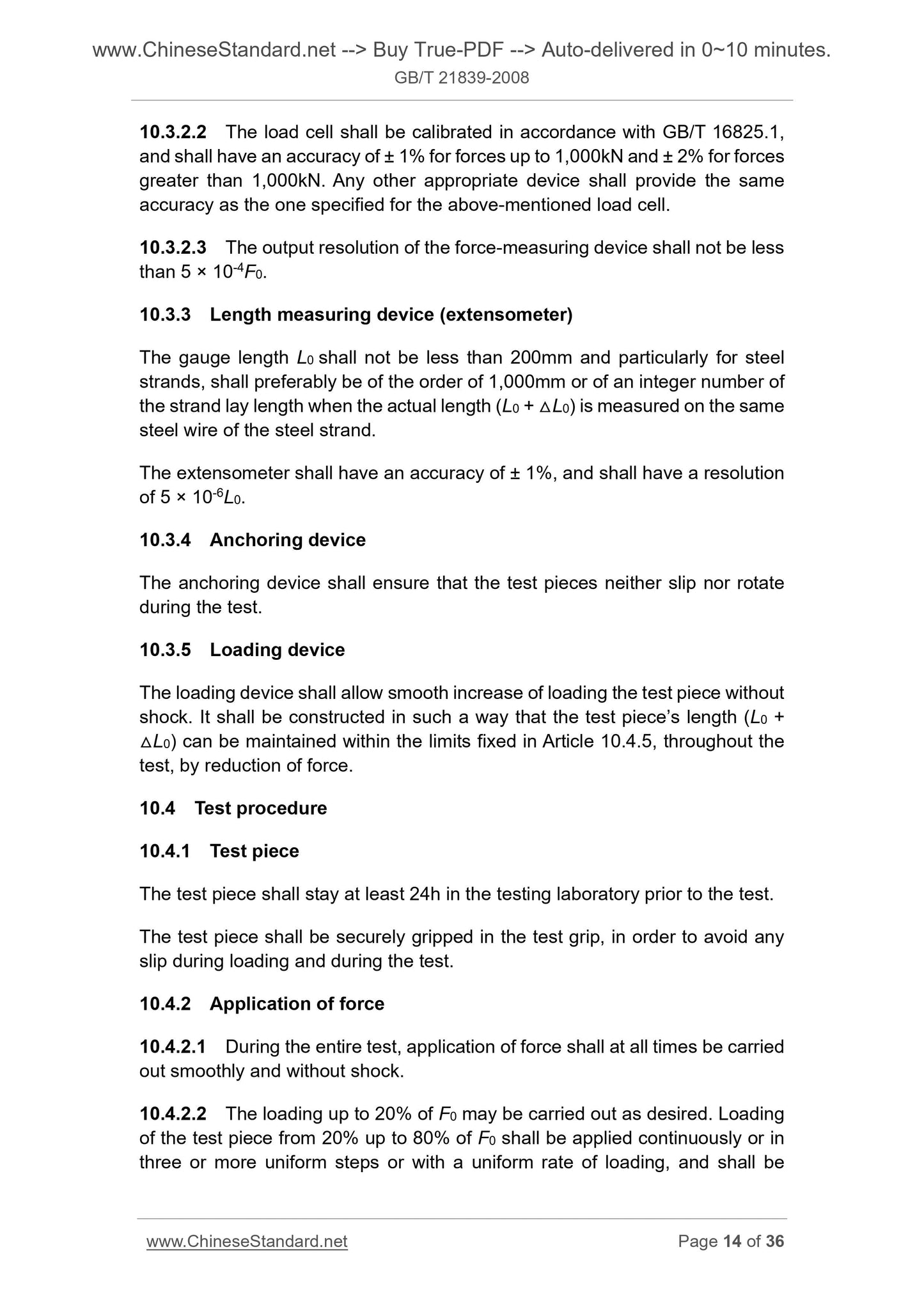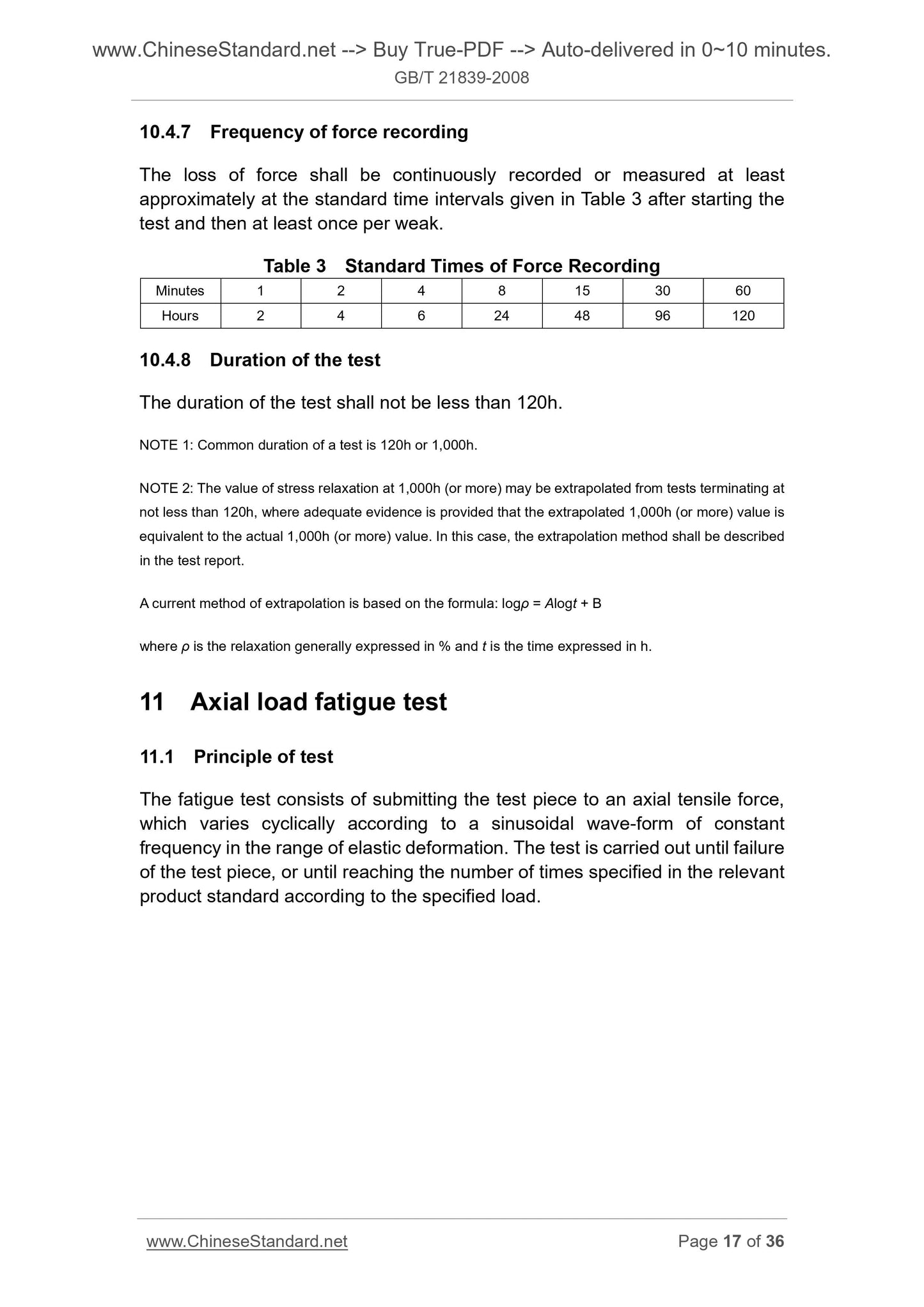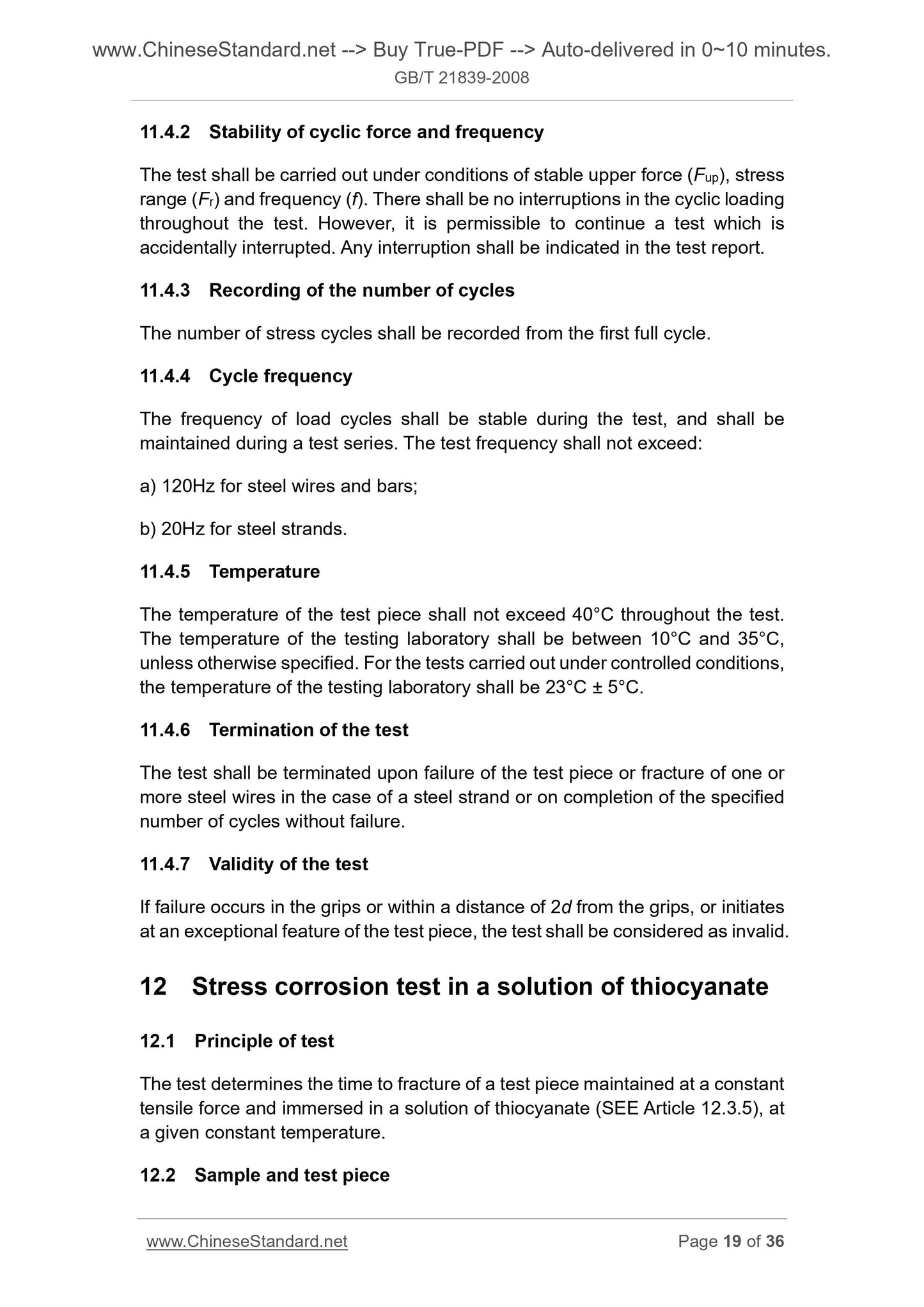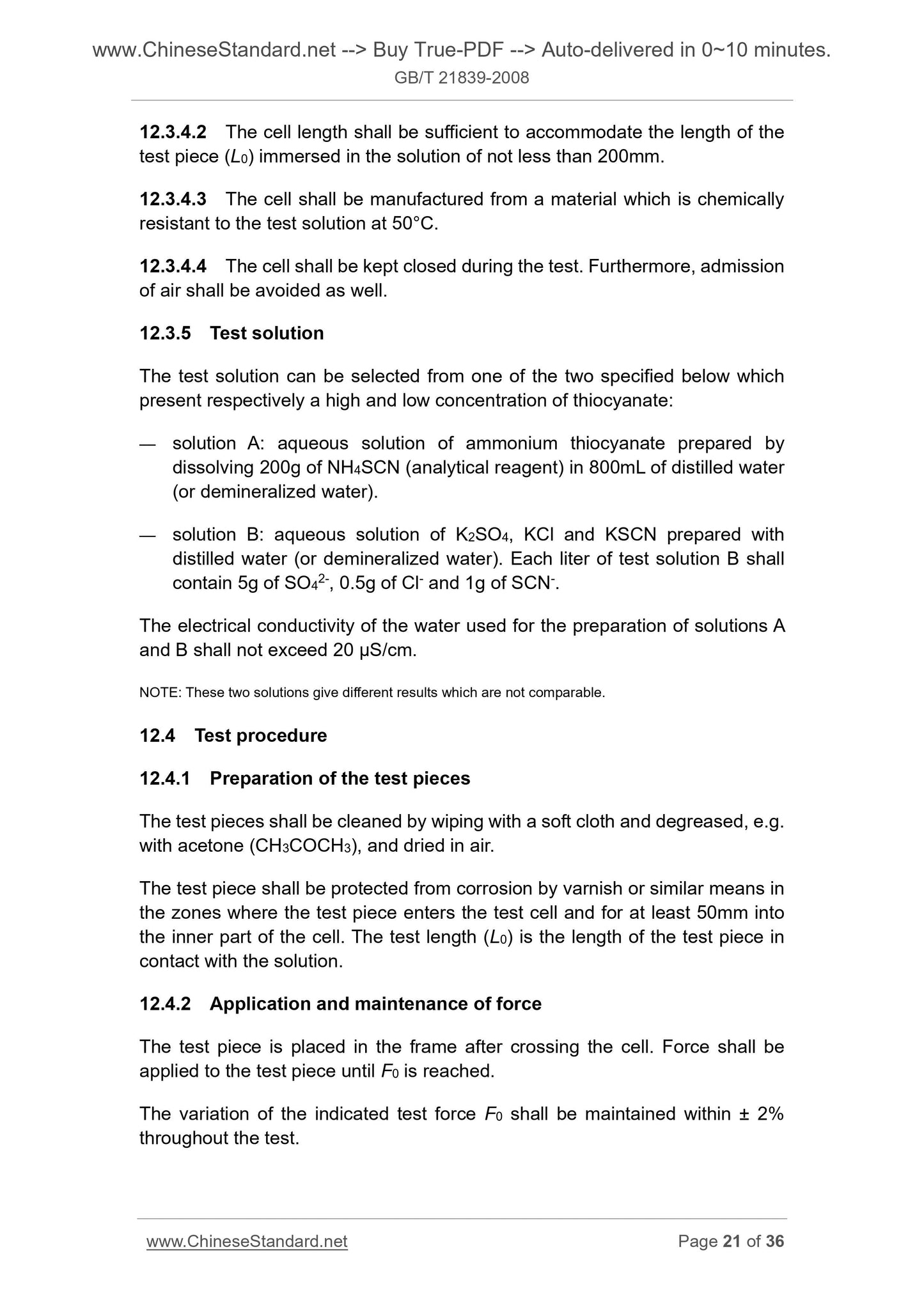1
/
of
12
PayPal, credit cards. Download editable-PDF and invoice in 1 second!
GB/T 21839-2008 English PDF (GB/T21839-2008)
GB/T 21839-2008 English PDF (GB/T21839-2008)
Regular price
$200.00
Regular price
Sale price
$200.00
Unit price
/
per
Shipping calculated at checkout.
Couldn't load pickup availability
GB/T 21839-2008: Steel for prestressed concrete -- Test methods
Delivery: 9 seconds. Download (and Email) true-PDF + Invoice.Get Quotation: Click GB/T 21839-2008 (Self-service in 1-minute)
Newer / historical versions: GB/T 21839-2008
Preview True-PDF
Scope
This Standard specifies the test methods for tensile, bend, reverse bend,torsion, wrapping, isothermal relaxation, fatigue, stress corrosion, deflected
tensile, chemical analysis, measurement of the geometrical dimensions, and
determination of the relative rib area of the steel for prestressed concrete.
This Standard is applicable to the determination of the properties with regard
to the prestressed steel wires, bars, strands, etc.
Basic Data
| Standard ID | GB/T 21839-2008 (GB/T21839-2008) |
| Description (Translated English) | Steel for prestressed concrete -- Test methods |
| Sector / Industry | National Standard (Recommended) |
| Classification of Chinese Standard | H20 |
| Classification of International Standard | 77.140.15; 77.040.01 |
| Word Count Estimation | 22,241 |
| Date of Issue | 2008-05-13 |
| Date of Implementation | 2008-11-01 |
| Quoted Standard | GB/T 228; GB/T 230.1; GB/T 232; GB/T 238; GB/T 239; GB/T 2976; GB/T 3505; GB/T 12160-2002; GB/T 16825.1 |
| Adopted Standard | ISO 15630-3-2002, MOD |
| Regulation (derived from) | National Standard Approval Announcement 2008 No.8 (Total No.121) |
| Issuing agency(ies) | General Administration of Quality Supervision, Inspection and Quarantine of the People's Republic of China, Standardization Administration of the People's Republic of China |
| Summary | This standard specifies the use of prestressed concrete tensile steel, bending, repeated bending, twist, winding, isothermal relaxation, fatigue, stress corrosion, skewed stretch, chemical analysis, geometry measurements and determine the relative rib area and other test methods. This standard applies to prestressed steel wire, determination strand and other products related to the performance, bars. |
Share
